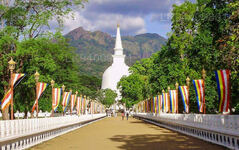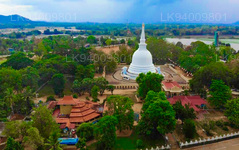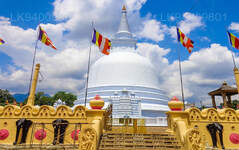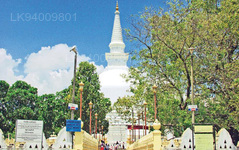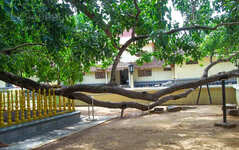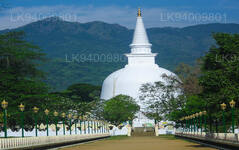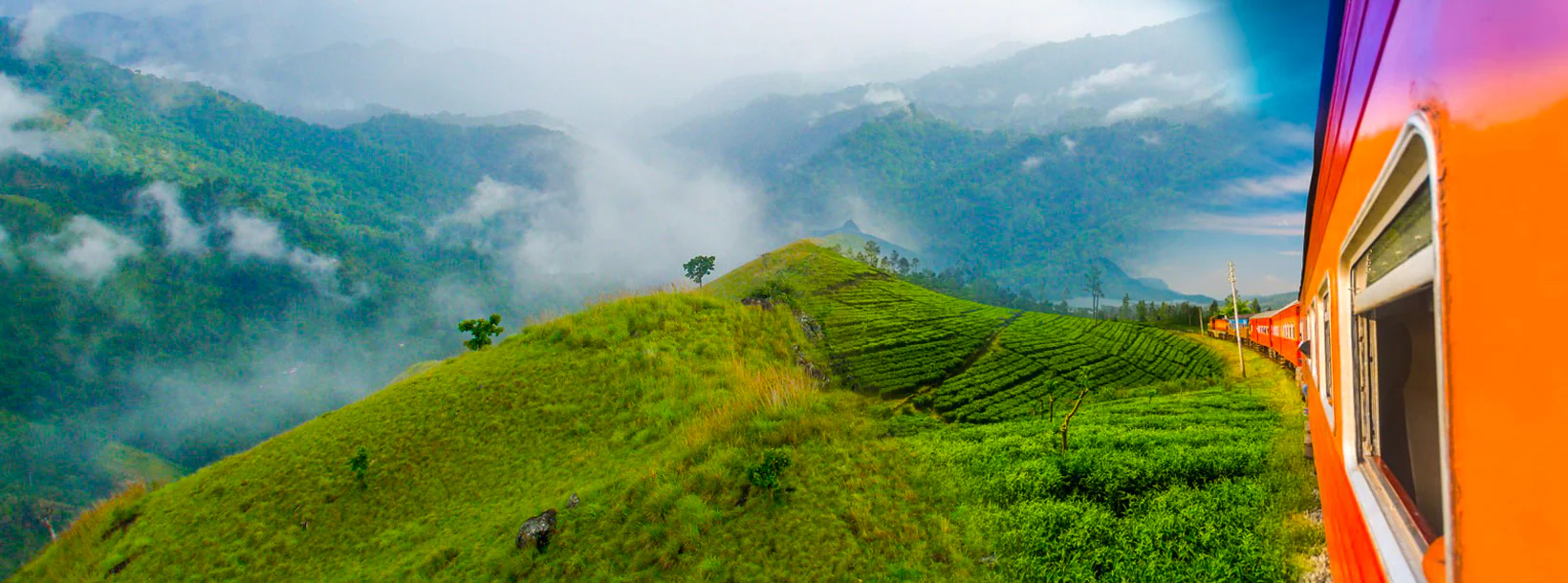
Badulla City
Badulla: Scenic town in Sri Lanka's hill country, surrounded by lush tea plantations and offering picturesque landscapes, waterfalls, and cultural sites.
Mahiyangana Viharaya
Mahiyangana Laut Mahavamsa wurde Sivuhelaya (Sri Lanka) von Sivu-Helayos bevölkert. Die Yakkhas (Clan) lebten zu dieser Zeit in Mahiyangana. Es heißt, dass der Buddha mit ihnen eine Diskussion über Dhamma geführt habe. Ein Yakkha-Häuptling namens Saman (der heute als Gottheit gilt) erlangte Sotapanna (erste Stufe der Befreiung), nachdem er der Rede des Buddha zugehört und vom Buddha ein Zeichen erbeten hatte, das sie in seiner Abwesenheit verehren konnten. Der Buddha gab ihm eine Handvoll Haarreliquie von seinem Kopf, die später von Saman in einem kleinen Stupa von 10 Fuß (3,0 m) Höhe aufbewahrt wurde. Dies war der erste Stupa, der zu Lebzeiten von Lord Buddha in Sri Lanka gebaut wurde. Nach dem Parinirvana des Buddha brachte ein Arhant namens Sarabhu den linken Schulterknochen des Buddha, der vom Scheiterhaufen geborgen worden war. Dieses Relikt wurde ebenfalls aufbewahrt und die Stupa wurde auf eine Höhe von 18 Fuß (5,5 m) vergrößert. Seitdem haben mehrere Könige diese Stupa renoviert und erweitert. König Dutugamunu erhöhte es auf eine Höhe von 120 Fuß. Herrscher als Voharikatissa, . Sena II, Vijayabahu I und Kirthi Sri Rajasinghe haben den Tempel gepflegt. Im Jahr 1942 wurde unter Rt Hon. eine Gesellschaft zur Renovierung des Tempels gegründet. DS Senanayake, der erste Premierminister Sri Lankas. Die Wiederaufbauarbeiten begannen 1953 und endeten 1980 mit der Fertigstellung einer neuen Spitze für die Stupa.
Special places in Badulla
-
 Muthiyangana Raja Maha Vihara
Muthiyangana Raja Maha ViharaMuthiyanganaya Raja Maha Viharaya lies in the centre of the city of Badulla. The History of this temple goes back to the time of Buddha but this area around Badulla goes way back in to the time of 19th -18th century BCE.
-
 Dowa Raja Maha Viharaya
Dowa Raja Maha ViharayaDowa Raja Maha Viharaya (Dowa Cape Temple) lies few kilometres away from the Bandarawela town on the Bandarawela – Badulla Road. This temple is thought to be done by King Walagamba in the in first century BC.
-
 Bogoda Wooden Bridge
Bogoda Wooden BridgeThe Bogoda Wooden Bridge was built in the 16th century during the Dambadeniya era. This is said to be the oldest surviving wooden bridge in Sri Lanka. The bridge is situated at 7 kilometres (4.3 mi) west of Badulla.
-
 Dunhinda Falls
Dunhinda FallsDunhinda Falls is situated about 5 km away from Badulla town. It is 63 meters high and is considered to be one of the most beautiful waterfalls in Sri Lanka. The falls gets its name dew to the smoky dew drops spray.
About Badulla District
Badulla is the capital of Uva Province in Sri Lanka. Badulla is located on the southeast of Kandy, almost encircled by the Badulu Oya , about 680 meters (2200 ft) above sea level and is surrounded by tea plantations. The town is overshadowed by the Namunukula range of mountains. Badulla is about 230km away from Colombo towards the eastern slopes of central hills of Sri Lanka.
Badulla and surroundings are highly recommended for eco-tourists as Horton Plains National Park and the Knuckles mountains are few hours away.
About Uva Province
The Uva Province is Sri Lanka's second least populated province, with 1,187,335 people, created in 1896. It consists of two districts called Badulla and Moneragala The provincial capital is Badulla. Uva is bordered by Eastern, Southern and Central provinces. Its major tourist attractions are Dunhinda Falls, Diyaluma Falls, Rawana Falls, the Yala National Park (lying partly in the Southern and Eastern Provinces) and Gal Oya National Park (lying partly in the Eastern Province). The Gal Oya hills and the Central Mountains are the main uplands, while the Mahaweli and Menik rivers and the huge Senanayake Samudraya and Maduru Oya Reservoirs are the major waterways in Uva province.
【Text by Lakpura™. Images by Google, copyright(s) reserved by original authors.】

